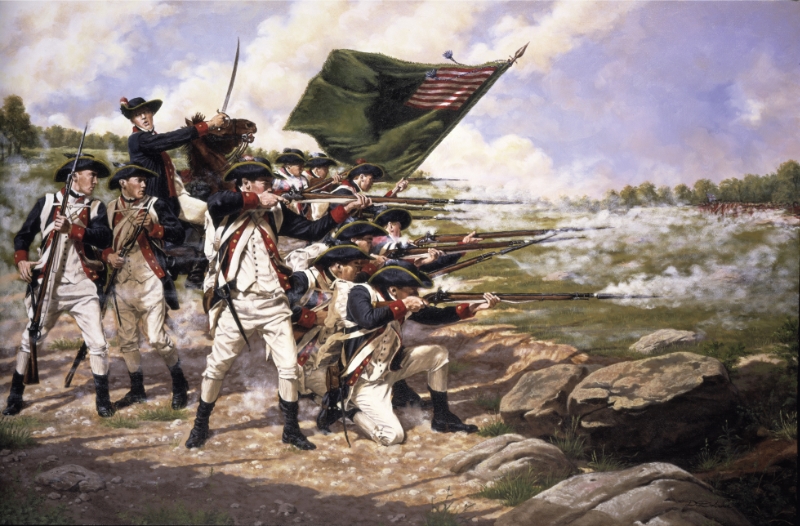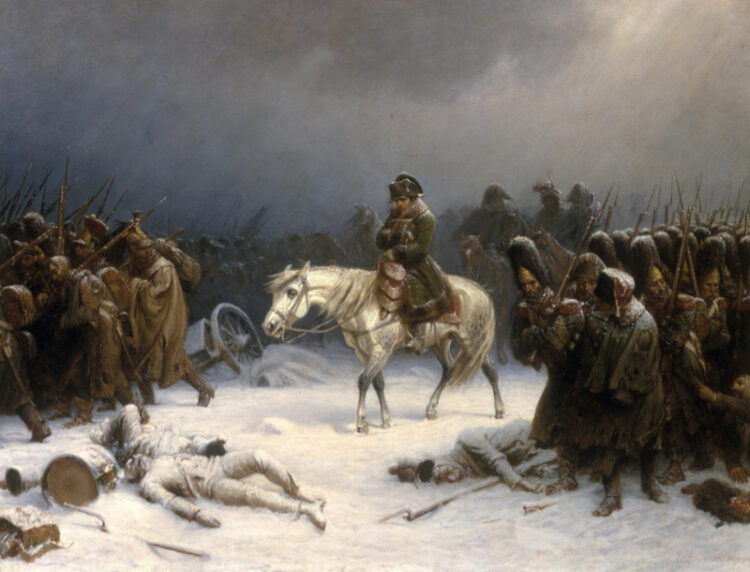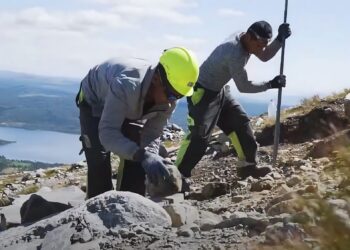History is often marked by various events that have led to other events. The consequences and implications of these events is what links the chain of history.
But what if some of these events had gone differently? Unfortunately, we will never know the answer to this question since we are past the times of these events. However, we can look at the causes of these significant moments such as the environment. Mother Nature has imposed her will on us humans many times which have altered the very course of our history.
Failed Mongol Invasion of Japan

The Mongols are perhaps some of the most famous conquerors in history. They presided over the largest land empire in history and were thought to be unstoppable in their dominative endeavors. However, even they couldn’t face the wrath of the Earth.
In 1260, Kublai Khan, the grandson of Genghis Khan, was declared ruler of the Mongol Empire. Wanting to expand his territory, Kublai Khan sent envoys on a diplomatic mission to Japan 6 different times to demand that the Japanese submit to the Mongols. All 6 times, his demands were ignored. So, in true Mongol fashion, the only other option was invasion. In 1274, a combined Mongol and Korean invasion force of around 30,000-40,000 troops embarked on 500-900 ships for Japan. The invaders initially saw some success as they were able to easily sweep aside small settlements on the isolated islands of Tsushima and Iki. However, when the Mongols landed on the mainland in Hakata Bay, the far outnumbered Japanese defenders were able to hold their own. A withdrawal was ordered by Mongol commanders and the fleet retreated out of the bay and towards the ocean.Then, a sudden typhoon swept through and largely destroyed the fleet. Many of the ships were tossed and wrecked under the waves and some were even beached.
A second invasion was attempted in 1281 with an estimated 70,000-100,000 troops which might have been the largest sea born invasion force before the D-Day landings during WWII. Similar to the first invasion, the Mongols saw some success at first with the occupation of Iki but found the coast heavily fortified and defended. The invasion force was held up on the coast near Munakata and Shima when another monster typhoon hit the fleet. Some of the ships attempted to make for the ocean. More than half of the fleet was sunk or wrecked on the beach by the end of the weather event. Soldiers who washed up on the shore were quickly found by the Japanese and killed.
The intervention of the weather shaped history as Japan remained an independent nation. The Japanese even called the weather that saved them the kamikaze or “divine wind.” If the typhoons had not wrecked the Mongol invasion forces, our world would certainly look different today, especially considering Japan’s crucial role in the events of the 20th century.
Washington’s Successful Retreat at the Battle of Long Island

The American Revolution is certainly one of the most influential events in all of world history. However, us Americans may owe the very existence of our great nation to the environment.
After the British withdrawal from Boston on March 17, 1776, George Washington knew that they would be back to strike again. He correctly predicted that their target was New York and set up defenses. However, Washington’s forces were meager to say the least. Discipline was inadequate and routine orders were sometimes not even carried out. Continental forces were also outnumbered 2 to 1 as the vastly superior British invasion force had around 20,000 soldiers while the American forces numbered around 10,000. The outlook was grim. Though, the Americans did have a few aspects going for them. For one, the first line of defensive forces occupied the high ground on the Guan Heights which were hills that could reach up to 150 feet in height. A second, more fortified, line of defense was set up at Brooklyn Heights.
On August 26 at 9:00 pm, the British made their advance. Under the cover of darkness, British commanders William Howe, Charles Cornwallis, and Henry Clinton secretly led a column of 10,000 men around the American left flank. By early morning, the other half of the British force began their attack on the American right flank and center, with cannons bombarding the defenses on the heights. The Continental Army was able to repulse any attacks made by the British forces. At that moment, the battle seemed to be in the favor of the Americans. This quickly changed at around 9:00 am when cannon shots were heard from behind the heights. When the Continentals turned around to look, they were stunned to see that 10,000 British troops had outflanked them and were now behind their defenses. At this moment, British forces at the center and on the flank attacked simultaneously and began to sandwich the American troops on the left. The Continentals panicked which triggered a mass route. In this route, more than 20% of the American forces were killed, captured, or wounded. Though the left had completely crumbled, the right flank was successfully holding on as Delaware and Maryland Continentals kept the British in check with their counter-attacks. However, with the rest of the army gone, the American troops on the right flank could only hold on for so long. Ultimately, the remaining Continental forces hastily fled to the Brooklyn Heights under covering fire from their fellow forces in the Brooklyn fortifications. By the afternoon, the British outnumbered the Americans almost 3 to 1.
British General Howe made a controversial decision to not push on and lead an assault on the American defenses as he knew that his campaign could not afford large scale losses. He pulled back his troops for now. Over the next two days, Mother Nature made her intervention. Storms prevented the Royal Navy from cutting off Washington’s line of retreat to New York. During the night, an incredibly thick fog laid over the Island. Washington took advantage of this and ordered a retreat back to Manhattan. The Continental Army rowed across the river without the British noticing at all. The withdrawal was conducted perfectly as not a single man was injured or killed. By morning, the British found Brooklyn Heights completely abandoned and the Americans gone.
Had the fog and storms not given Washington’s army cover, the Revolution could have been over before it even began. The United States may not have ever existed if it weren’t for this environmental intervention.
Napoleon’s Disastrous Invasion of Russia

Napoleon is widely considered to be the greatest military leader in history. His strategic and tactical genius on the battlefield allowed him to obtain one of the most impressive battle records ever. Paired with his unparalleled administrative and political skills, his legacy still echoes through the halls of history to this day. However, not even the First Emperor of the French could best nature.
After Napoleon’s stunning victory over the Russians in 1807 at the Battle of Friedland, France and Russia both signed the Treaty of Tilsit which forged an alliance between them. This would not last long. Over the next 5 years, the relationship between France and Russia greatly soured as the Russians were irritated by Napoleon’s actions. These actions included the creation of a Duchy of Warsaw on Russia’s border, Napoleon’s offer to marry the Tsar’s sister, Frances annexation of the Duchy of Oldenburg, which violated a guarantee made by the Treaty of Tilsit, and worst of all, the Continental System. The Continental System was a blockade against Britain by France and her allies intended to economically cripple the British as they had been financing the coalitions fighting against Napoleon. The lack of exports and sky-rocketing inflation devastated the Russian economy. When Napoleon found out that Russia had begun secretly trading with Britain, he was infuriated and decided to invade.
Starting in 1811, Napoleon began assembling the largest army Europe had ever seen and one of the largest invasion forces in history. Around 600,000 troops gathered near the western border of Russia. The Russians had around 280,000 men to defend against Napoleon’s titanic army. In June of 1812, Napoleon’s army crossed into Russian territory. The extreme summer heat had become apparent but was initially not a worry to Napoleon as he expected the campaign to be over within 5 weeks. The Russian army retreated and used a scorched earth strategy to deny the invaders supplies from the land. Napoleon continued to pursue them as he reasoned that if he could score a decisive victory over them in battle, he could force them into peace negotiations. By the end of July, when he entered Vitebsk, Napoleon had marched 250 miles into Russia. This was certainly much further than he had planned which caused his supply line to be stretched incredibly thin. The army had already suffered around 20% casualties due to environmental factors. The extreme summer heat and long days of marching caused over exhaustion in many soldiers. The heat also provided a great ecosystem for diseases to spread amongst the troops, specifically dysentery and typhus. After Napoleon’s victory at the Battle of Smolensk, he decided that, in order to force Russia to submit, he would take its cultural and historical center: Moscow.
Napoleon met the Russian army at Borodino just 70 miles away from Moscow in September. The Battle of Borodino would prove to be the single bloodiest day of the Napoleonic Wars. The Russians fought fiercely but, due to the incredibly high number of casualties, withdrew and gave up Moscow. Just one week later, Napoleon entered the city to find it deserted and purposefully set ablaze by the Russians as they would rather burn it than let it fall into enemy hands. Napoleon waited to receive any peace offers yet none came. He grew increasingly worried as it was already October and he knew how harsh Russian winters could be. When he got word that the Russian army launched two attacks to pinch his supply line and that they defeated his advanced guard with a surprise engagement, Napoleon ordered the retreat. Again, now during the retreat, nature imposed its unforgiving will on the army. By the end of October, the temperature dropped below freezing. Discipline began to fall apart. The sick and wounded were dumped on the side of the road to ensure the survival of the healthy. By early November, temperatures plummeted even more and it began to snow heavily. Soldiers were only equipped with summer clothing as they expected the campaign to be over by the end of summer. Many troops froze and starved to death. Wagons and weapons were abandoned and some soldiers sought to save themselves by leaving the main army to search the land for any food. Most of the men who did this were promptly cut down by Russian Cossacks. Just one month after leaving Moscow, one-third of the army was either dead or captured. While all of this was happening, the Russian army was constantly attacking Napoleon’s weakened army. At one point, they nearly encircled the invasion force if it weren’t for a successful diversion that allowed most of Napoleon’s army to slip away. By early December, the temperatures had decreased even more with constant blizzards bombarding the men. On December 9th, what was left of Napoleon’s invasion force crossed back into friendly territory.
Out of the nearly 600,000 men Napoleon led into Russia, only around 95,000 returned. For every 12 soldiers that entered Russia, 1 was killed in action, 2 became prisoners, 7 died from illness or climate, and 2 returned alive.
The harsh Russian weather inflicted heavy losses on Napoleon’s army and greatly worsened the already precarious position of the invasion force. The disastrous retreat ultimately led to the downfall of the Emperor of the French. If Mother Nature had not forced its harsh reality onto Napoleon’s army, the French Empire possibly would have been able to live on, certainly changing the course of history.












